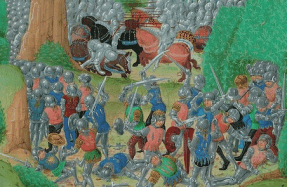The secret history of the Bishops’ Wars, part 2

The start of the First Bishops’ War
Military operations in the First Bishops’ War ran from February to late June 1639. Geographically they covered western Scotland from the Solway Firth north to Argyll, and in the east from Inverness to Berwickshire. Outreach to the disaffected English formed part of their operations; what we now call ‘psyops’. February saw the printing of another tract for England (by Sir Alexander Gibson of Durie and Archibald Johnston of Wariston): An Information to all good Christians within the kingdome of England. Building on an earlier 1638 pamphlet, this one assailed bishops as members of a Catholic and tyrannical conspiracy. The covenanters’ pamphlets fostered animosity to the royal cause among substantial portions of the English.
Militarily the first blow occurred when the Mackenzies and Lovat Frasers captured Inverness for the covenanters. Meanwhile General of Artillery Alexander Hamilton had designed and overseen the construction of fortifications for the ports of Leith and Burntisland on the Firth of Forth. In February (as Adam Marks has recently revealed), three British regiments in the Swedish army reached Scotland on Swedish ships. These included the infantry regiments of colonels Sir Robert Monro’s (a Scot) and that of Colonel Charles Fleetwood (an Englishman, whom the Swedes purposefully misidentified as a Scot). On 21 March General Alexander Leslie led these men in a successful attack against Edinburgh Castle. The assault used a petard made by General of Artillery Hamilton. The veterans of the Swedish army then partnered with Dalhousie, Lothian, Balmerino and Cranston, who led 3,000 horsemen in securing the eastern border. By mid-March the covenanters had begun drilling their men in Angus, Perthshire and the Mearns.
On 28 March an army with Montrose’s Angus and Perthshire foot regiment, Marischal’s Mearns men, Leslie’s Fife foot and the earl of Kinghorn’s Angus and Fife levies led by Leslie rendezvoused at Kintore to march on Aberdeen. During this campaign Montrose introduced the blue sash and blue ribbons to distinguish his men from the royalists. These became standard throughout the covenanters’ forces. In the last issue, we noted Colonel Erskine’s regiment had previously been levied for French service. It received another Scottish privy council warrant after 14 January, probably with the councilors hoping these men would be unavailable to the covenanters. Instead they served as Lord Erskine’s foot in the first (of four) occupations of Aberdeen. In April the Tables ordered the
You’re reading a preview, subscribe to read more.
Start your free 30 days



